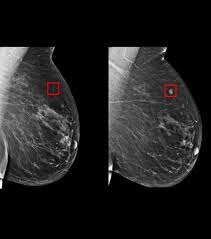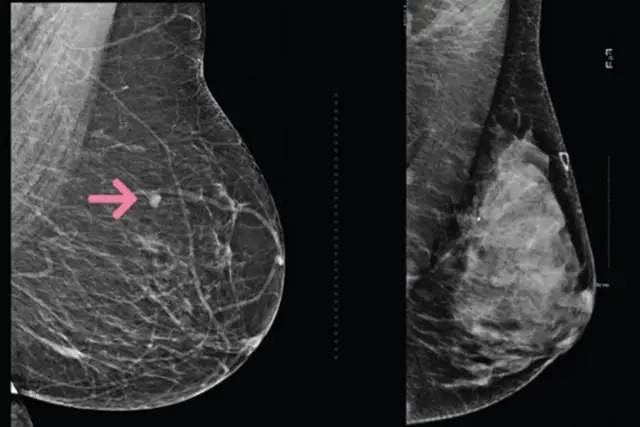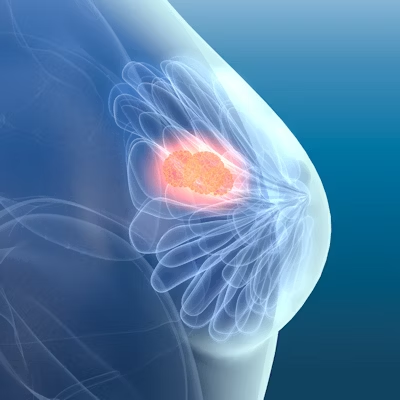Artificial Intelligence is no longer just a buzzword—it’s a transformative force reshaping entire industries. While much of the internet focuses on AI chatbots, marketing tools, or auto-repliers on social media, there’s something far more meaningful happening in the background: AI is quietly revolutionizing healthcare. And now, it’s doing something almost unbelievable—detecting breast cancer up to five years before symptoms even appear.
This groundbreaking capability is more than just impressive. It’s life-changing. It’s exactly the kind of application that proves AI isn’t just about convenience—it’s about survival.

Early Detection Saves Lives: Why Timing Is Everything
When it comes to cancer, timing is everything. The earlier it’s caught, the better the chance of successful treatment. Traditional mammograms already help detect cancer early, but they’re still limited by human observation. Radiologists are incredibly skilled, but like any human, they’re not infallible. Tiny details can be missed. Patterns too subtle for the eye can go unnoticed.
That’s where AI steps in.
By analyzing thousands—if not millions—of medical images, AI can learn to detect microscopic patterns that precede cancerous growth. These aren’t things we can see. They’re digital fingerprints hidden deep within the data. And remarkably, AI is now capable of identifying these red flags up to five years before cancer fully forms.
Video: AI Detects Breast Cancer 5 Years Early
How AI Detects Breast Cancer Before It Develops
So how exactly does this work?
It starts with training. AI algorithms are fed massive datasets of mammograms, both from healthy individuals and those later diagnosed with breast cancer. The AI then begins to “learn” what early changes might signal the start of something dangerous.
Unlike a radiologist who might compare one or two previous images, AI scans patterns across thousands of images in milliseconds. It looks at tissue density, structure changes, and other tiny anomalies invisible to the human eye. The result? A predictive model that doesn’t just diagnose — it forecasts.
This isn’t science fiction. It’s real. And it’s already being used in clinical trials and select medical centers.
The Public Reaction: “This Is What AI Should Be For”
When a tweet featuring two medical scans recently went viral, it wasn’t just the technology that grabbed people’s attention — it was the message behind it.
A user named Jenni posted:
“This is what we want to see AI being used for, not to create another social media auto replier for marketing.”
That statement struck a nerve. In a world where AI is often used for superficial convenience — generating hashtags, spamming comment sections, or auto-replying in DMs — Jenni’s words reminded us what truly matters. We don’t just want smarter ads. We want longer lives.
This is the kind of tech advancement that shifts the narrative from novelty to necessity.
AI in Healthcare: More Than Just Breast Cancer Detection

While this AI breakthrough in breast cancer detection is making waves, it’s just the tip of the iceberg. AI is being tested and implemented in various branches of medicine:
- Skin cancer detection through smartphone apps
- Heart disease prediction based on subtle ECG pattern analysis
- Diabetic retinopathy screening using AI-assisted eye scans
- Mental health monitoring via speech and behavior pattern recognition
And the list keeps growing.
These aren’t distant dreams. These are present-day innovations with real results. They’re not replacing doctors — they’re helping them. AI becomes a second set of eyes, a faster analyst, a quiet assistant working tirelessly behind the scenes.
Why We Must Prioritize Ethical and Human-Centered AI

Of course, not all uses of AI are created equal. For every groundbreaking tool saving lives, there’s a dozen shallow apps repurposing AI to sell more products, automate spam, or manipulate social media engagement.
It’s not that these uses are inherently bad — but they pale in comparison to the possibilities when AI is pointed toward human-centered goals. We must ask: are we using this technology to enrich lives, or just to chase clicks?
Healthcare, education, climate science, accessibility — these are the arenas where AI can truly shine. And it’s up to us — developers, policymakers, and everyday users — to push it in the right direction.
Real Impact: AI That Protects, Not Just Predicts
The emotional weight of this innovation cannot be understated. Imagine the number of lives saved because a woman was warned years in advance. Imagine being told not that you have cancer, but that you’re at risk, and there’s time to act now.
That’s not just innovation. That’s hope.

The ripple effect is massive. Early detection means less invasive treatments, fewer surgeries, lower healthcare costs, and higher survival rates. It also means peace of mind for millions of families who’ve watched loved ones fight this devastating disease.
Conclusion
The rise of AI isn’t just about faster tech — it’s about smarter, more compassionate solutions. Breast cancer detection years before it appears? That’s a future worth investing in. That’s where our focus should be.
Let AI write emails and automate replies if it must — but let’s never forget the power it holds when used for good. To save lives. To ease suffering. To change what it means to detect and defeat disease.


